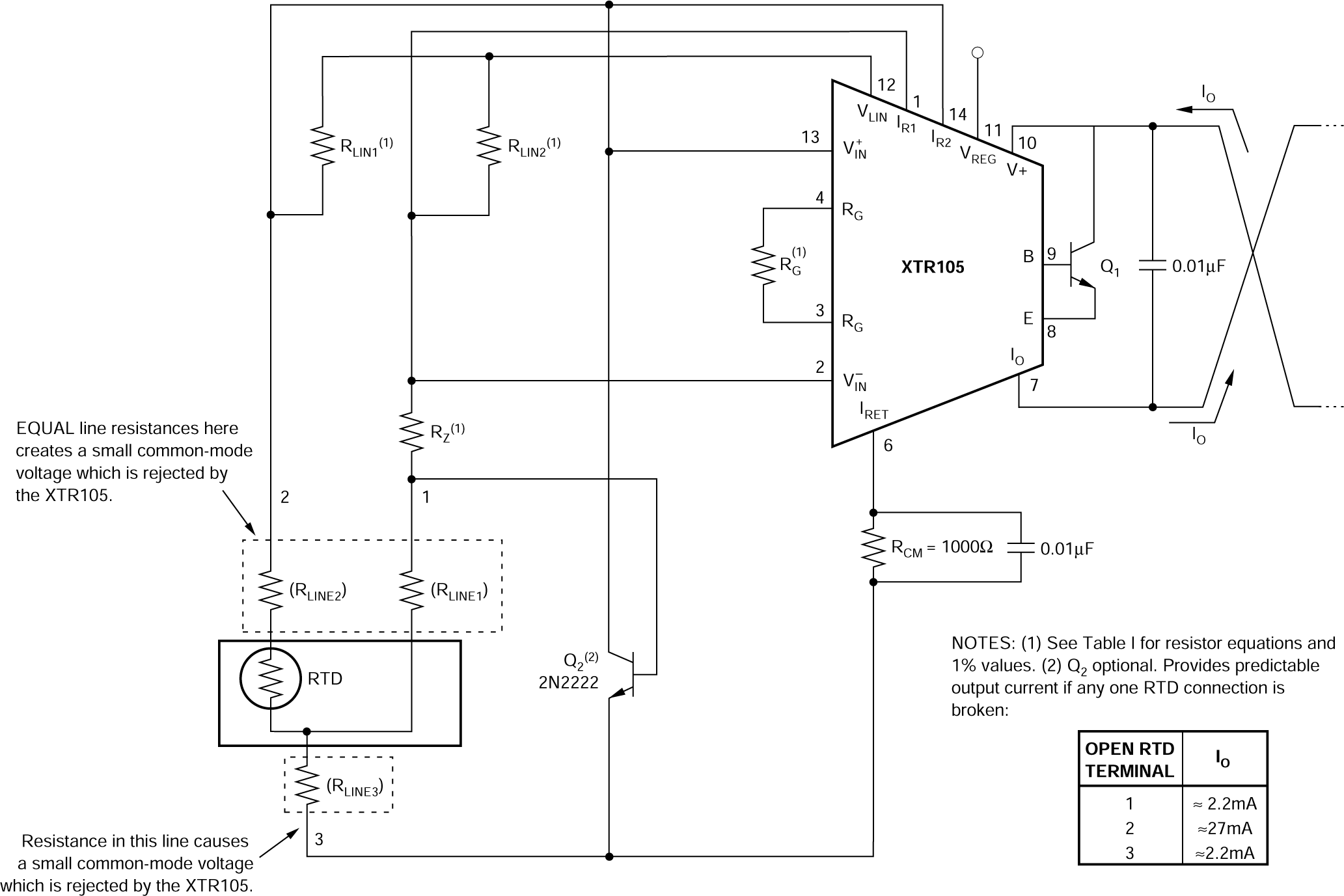ZHCSV99C February 1997 – October 2024 XTR105
PRODUCTION DATA
6.3.3 Open-Circuit Protection
Optional transistor Q2 in Figure 6-3 provides predictable behavior with open-circuit RTD connections. If any one of the three RTD connections is broken, the XTR105 output current goes to either the high current limit (≅ 27mA) or low current limit (≅ 2.2mA). This state is easily detected as an out-of-range condition.
 Figure 6-3 Remotely Located RTDs With a 3-Wire
Connection
Figure 6-3 Remotely Located RTDs With a 3-Wire
Connection